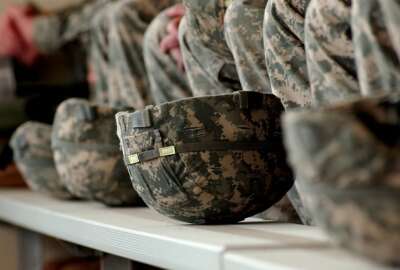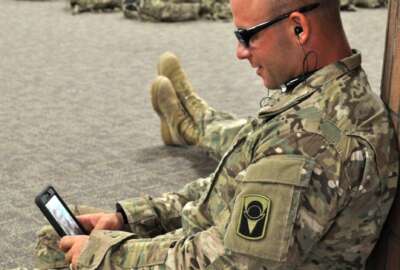Army may have cracked the code on BYOD: 20,000 devices coming online next week
The biggest-yet phase of the bring-your-own-device pilot will help the Army figure out how to scale the technology across a diverse population of users in the...
Best listening experience is on Chrome, Firefox or Safari. Subscribe to Federal Drive’s daily audio interviews on Apple Podcasts or PodcastOne.
The Army is about to begin its first large-scale deployment of a technology that will let soldiers use their own phones and tablets to connect to government networks — a notion that, as recently as a few years ago, would have seemed like a pipe dream because of various legal, policy and cybersecurity concerns.
On Oct. 11, the Army will start rolling out the bring your own device (BYOD) program to 20,000 new users. While that number is extremely small compared to the total force of military members, civilians and contractors, it’s massive by comparison to the limited tests it’s conducted during pilot efforts so far.
The first two phases of the pilot focused on a relative handful of “champions” who the Army hoped could help inform the process, plus a somewhat larger sample of users concentrated in the National Guard.
The latest iteration – Phase 3 of the BYOD pilot – was rolled out to senior Army technology officials in advance of next week’s broader deployment. And at this point, the user experience on a personal device is basically identical to what an Army user would get from a government-furnished device, said Kenneth McNeill, the National Guard’s chief information officer.
“I’ve turned off my government device and I’ve been working solely with this solution,” he said in an interview with Federal News Network. “I can access everything that I need – my emails, Microsoft Office, Teams – I’ve experimented with every app and capability that I would use on my government device.”
The platform the Army’s using is made by a small business called Hypori. Its product, called Halo, works around some of the problems that have made military implementations of BYOD seem improbable until recently.
The short explanation for how it all works that no government data is actually stored on the device itself. Rather, each personal device connects to a commercial cloud environment – called C-Army – that the Army’s Enterprise Cloud Management Agency has already established and accredited to handle data at the various impact levels DoD’s security requirements guide demand.
A longer explanation for how this all actually happened is rooted in COVID-19 pandemic.
Like everyone else, the military needed a way to let employees communicate without being in the same physical space as their colleagues.
So with lightning speed, at least in DoD terms, the Pentagon stood up a service called Commercial Virtual Remote (CVR), which gave almost every DoD employee access to Microsoft Teams, including from personal devices. To make it work, the department had to invest heavily in increasing the amount of bandwidth available on its data connections between its own facilities, commercial cloud providers, and the outside world more generally.
And once a capability like CVR had shown itself as practical, there was no going back, McNeill said.
For the National Guard, it was the first time members had ever been able to access DoD information systems in meaningful ways without being physically present on a military installation.
“And the [Defense] Department has stepped up the game. I give a lot of credit to the DoD CIO for leading the effort across the board,” he said. “Across the department, we still have telework and remote work in place, so this has multiple uses for the DoD as a whole. But those lessons learned were very helpful – how we invested in the network and increased our bandwidth was really tremendous, and we’re now able to benefit from that.”
Although the National Guard served as the testbed for the first phases of the pilot, most of the new users that will be added next week will be from the active duty component of the Army; the National Guard Bureau will also test the solution in some Air National Guard wings as part of the rollout.
In principle, McNeill said, there’s no good reason the same approach can’t be used across the whole of DoD. The biggest thing the next phase of the pilot will reveal is how it really performs across a large sample of everyday users in a variety of different work environments—.
“From my perspective, the user experience is great. But I’m the CIO of the National Guard,” he said. “It really matters how soldiers and airmen view this user experience, and that’s what we’re trying to get at. We think the technology is secure — we have all of that. But if the user thinks it’s not quite right, we have to adjust.”
Copyright © 2025 Federal News Network. All rights reserved. This website is not intended for users located within the European Economic Area.
Jared Serbu is deputy editor of Federal News Network and reports on the Defense Department’s contracting, legislative, workforce and IT issues.
Follow @jserbuWFED
Related Stories






